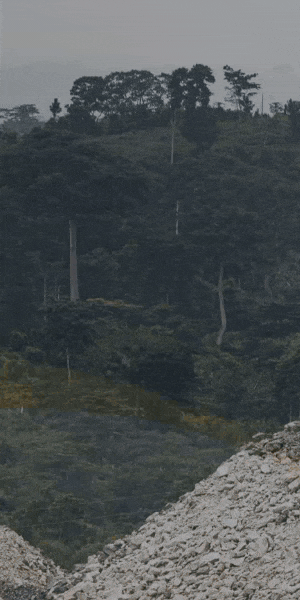Gold Rally Fuels New Found Gold's High-Grade Dropkick Discovery

New Found Gold's Dropkick zone hits 42.8 g/t gold over 14.95m as analysts forecast gold at US$4,275/oz for 2026, creating compelling investment case.
- New Found Gold Corp. intercepted 42.8 grams per tonne gold over 14.95 meters at the Dropkick zone, expanding the discovery's strike length to approximately 580 meters with mineralization remaining open in all directions.
- Analysts now forecast gold averaging US$3,400 per ounce in 2025 and US$4,275 per ounce in 2026, the first time consensus has exceeded US$4,000, driven by geopolitical uncertainty, central bank buying, and interest rate expectations.
- The Dropkick zone sits 8 kilometers north of Queensway's main resource area, demonstrating district-scale potential across the 1,650-square-kilometer land package in Newfoundland's prolific gold terrain.
- The company has committed to a 70,000-meter drill program in 2025, allocating 80% to resource infill and pre-development work while dedicating 20% to new discovery targets.
- With high-grade mineralization starting at surface, extending to 285 meters vertical depth, and remaining open, New Found Gold offers investors exposure to both near-term resource expansion and long-term district-scale discovery potential.
Introduction: A Golden Opportunity in Newfoundland
New Found Gold Corp. operates the Queensway Gold Project in central Newfoundland and Labrador, a jurisdiction that has witnessed renewed exploration interest following several high-grade discoveries in recent years. The 1,650-square-kilometer property hosts multiple mineralized zones along the Appleton Fault Zone (AFZ), a regional structure that has delivered some of Canada's most impressive drill intercepts. Against a backdrop of surging gold prices, with the metal up 54% in 2025 and analysts forecasting continued strength into 2026, the company's latest results from the Dropkick zone underscore why disciplined exploration in tier-one jurisdictions can generate substantial shareholder value. This article examines why the convergence of exceptional drill results, favorable commodity fundamentals, and systematic project advancement positions New Found Gold as a compelling investment opportunity.
The Dropkick discovery, located approximately 8 kilometers north of the main Queensway resource area, has evolved from an initial target into a significant mineralized system. Recent drilling has extended the known strike length to roughly 580 meters while confirming high-grade gold mineralization both west and east of the AFZ. With intercepts including 42.8 grams per tonne gold over 14.95 meters, the zone exhibits the coarse visible gold and fault-fill quartz vein characteristics that define the district's geological model. Importantly, mineralization begins at surface and has been traced to approximately 285 meters vertical depth, yet remains open in all directions, suggesting substantial expansion potential.
The timing of these results carries particular significance. A Reuters poll of 39 analysts and traders released on October 27, 2025, projects gold prices averaging US$3,400 per ounce in 2025 and US$4,275 per ounce in 2026. These forecasts represent upward revisions from US$3,220 and US$3,400 respectively in earlier polls, marking the first time consensus expectations have crossed the US$4,000 threshold for the coming year. For exploration and development companies like New Found Gold, this price environment transforms project economics, expanding margins and improving the viability of deposits that might have been marginal under different commodity assumptions.
Company Overview: Building a District-Scale Gold System
New Found Gold Corp. controls one of the largest land positions in Newfoundland's emerging gold district, assembling its holdings through systematic acquisition and staking. The Queensway Gold Project encompasses multiple mineralized zones, each at varying stages of exploration and resource definition. The company has identified several priority targets along the AFZ and parallel structures, with drilling campaigns designed to both expand known mineralization and test new geological concepts. Management has emphasized a dual-track strategy: advancing the main resource areas toward preliminary economic assessment while simultaneously pursuing grassroots discovery across the broader property.
The company's approach reflects industry best practices for district-scale exploration. Rather than concentrating exclusively on a single deposit, New Found Gold maintains multiple drilling fronts, allowing technical teams to pursue the highest-value targets while gathering district-wide geological intelligence. This methodology has yielded discoveries at various locations along the property, with Dropkick emerging as one of the more promising zones based on grade, continuity, and surface accessibility. The diversified target pipeline provides investors with exposure to both resource growth at established zones and the optionality associated with new discoveries.
Newfoundland and Labrador offers exploration advantages that include stable political jurisdiction, established mining infrastructure, skilled labor availability, and a regulatory framework that supports responsible resource development. The province has produced gold historically, and recent discoveries have attracted major mining companies and institutional investors. New Found Gold benefits from this favorable environment, operating in a region where geological potential intersects with investment-grade jurisdiction characteristics. For risk-conscious investors, jurisdictional quality represents a material consideration when evaluating exploration opportunities.
Key Development: Dropkick Zone Delivers High-Grade Intercepts
The recent drill results from Dropkick include several intercepts that merit attention. The headline result, 42.8 grams per tonne gold over 14.95 meters, represents exceptional grade by any standard, particularly within a system that exhibits continuity along strike and down-dip. Additional significant intercepts have been reported across the 580-meter strike length, demonstrating that mineralization is not isolated but instead forms a coherent structural system. The presence of coarse visible gold within fault-fill quartz veins aligns with the geological model established at other high-grade zones on the property.
Critically, the Dropkick mineralization extends both west and east of the AFZ, indicating that gold deposition is not confined to a single structure but instead occurs within a broader fault network. This observation carries exploration implications, as it suggests that additional parallel structures may host mineralization. The zone starts at surface, which simplifies potential mining scenarios by eliminating the need for deep shaft access or complex underground infrastructure in the early stages of any development. Drilling has traced mineralization to approximately 285 meters vertical depth, yet the system remains open below and along strike, providing clear targets for follow-up work.
The expanded strike length, from initial discovery dimensions to the current 580-meter extent, demonstrates systematic drilling success. Each successive drill program has either confirmed continuity between previously isolated intercepts or extended the known boundaries of mineralization. This pattern of consistent expansion through methodical drilling distinguishes discovery-stage projects with genuine growth potential from those that plateau after initial results. As CEO Keith Boyle explained in a recent interview,:
"When you go north, a bit further north, we run into our very exciting Dropkick target, which is really coming along well. We've been drilling there since June. For us, we saw that as a big opportunity, a strategic opportunity, to add the right kind of package along the Appleton Fault Zone in order to grow, potentially grow, the resources."
For investors, the trajectory of strike-length expansion and down-dip continuity serves as a key indicator of whether a discovery can mature into a resource of economic significance.
Strategic Significance: Positioning Within the Gold Price Rally
The macroeconomic context for gold has shifted materially over the past year. The Reuters poll that forecasted US$3,400 per ounce for 2025 and US$4,275 per ounce for 2026 reflects several structural factors. Analysts cited geopolitical and economic uncertainty, which elevates gold's traditional safe-haven role. Central bank buying has continued at historically elevated levels, with official institutions diversifying reserves away from pure currency holdings. Exchange-traded fund inflows have surged as retail and institutional investors seek portfolio hedges. Expected interest rate cuts reduce the opportunity cost of holding non-yielding assets like gold, making the metal more attractive relative to fixed-income alternatives.
Importantly, the current gold rally differs from previous cycles. Earlier price spikes often resulted from short-term shocks: currency crises, sudden geopolitical events, or monetary policy surprises. The current environment reflects structural concerns about currency stability and financial system confidence, suggesting that elevated prices may persist rather than quickly reverse. For mining companies, this distinction matters enormously. Projects that pencil economically at US$4,000-plus gold offer far greater margins and financing flexibility than those dependent on temporary price spikes. New Found Gold's high-grade intercepts at Dropkick gain additional significance in this context, as the combination of exceptional grades and a supportive price environment creates compelling project economics.
Gold's 54% gain in 2025 positions the metal for its strongest annual performance since the 1979 oil crisis, a period characterized by systemic economic restructuring. The year-to-date average of approximately US$3,281 per ounce already reflects substantial appreciation, yet analyst forecasts for 2026 anticipate further gains. This progression from US$3,220 (three months prior) to US$3,400 to US$4,275 in successive forecasts demonstrates momentum in both price and analyst confidence. For exploration companies, such an environment supports higher equity valuations, improves access to capital, and increases the likelihood that discoveries will attract acquisition interest from larger producers seeking to replenish reserves.
Current Activities: Systematic Drilling & Resource Advancement
New Found Gold has outlined a 70,000-meter drill program for 2025, one of the more substantial commitments among mid-tier exploration companies. The program allocates approximately 80% of drilling to resource infill and pre-development work, focusing on converting inferred resources to indicated categories and gathering the technical data required for preliminary economic assessments. The remaining 20% targets new discovery areas, including follow-up at Dropkick and testing of regional targets across the broader property. This allocation reflects a balanced approach: advancing known zones toward development decisions while maintaining discovery optionality.
At Dropkick specifically, near-term work will focus on defining the three-dimensional extent of mineralization. Follow-up drilling will test the zone's boundaries, both along strike and at depth, to establish whether the current 580-meter strike length and 285-meter vertical extent represent the full system or merely the portions discovered to date. Surface mapping and geophysical surveys will help identify parallel structures and potential mineralization offsets. If results justify the commitment, underground exploration access may be considered to allow more precise drilling geometries and bulk sampling for metallurgical testwork.
The company's broader strategy involves advancing multiple zones in parallel. While Dropkick represents an exciting discovery-stage opportunity, the main resource area continues to see infill drilling designed to increase confidence levels and support engineering studies. This multi-zone approach mitigates project risk by ensuring that value creation does not depend solely on a single deposit. For investors, the diversified work program means that quarterly results may include updates from several zones, providing multiple catalysts and reducing the binary risk associated with single-target exploration stories.
Investor Considerations: Risks, Rewards, & Portfolio Fit
The Dropkick discovery offers clear value drivers: high-grade intercepts, expanding strike length, and surface-accessible mineralization within a supportive commodity environment. However, investors must weigh these positives against early-stage risks. True widths of mineralization have not been fully established, as drill intercepts represent downhole lengths that may differ from the actual thickness of mineralized structures. The project lacks reserves or even a comprehensive resource estimate, meaning that the tonnage and grade at Dropkick remain uncertain. Metallurgical characteristics (recovery rates, processing requirements, deleterious elements) have not been fully disclosed, introducing unknowns about how the material will perform in production scenarios.
Market risk also warrants consideration. While analyst consensus forecasts gold at US$4,275 per ounce for 2026, commodity prices remain volatile. Strengthening economic growth could reduce safe-haven demand, while elevated interest rates would increase the opportunity cost of holding gold. Supply-side dynamics, including production increases from major miners or changes in central bank buying patterns, could pressure prices. New Found Gold's equity valuation will correlate strongly with gold price movements, meaning investors assume commodity exposure alongside company-specific exploration risk.
Despite these caveats, the Dropkick results fit within a broader company strategy focused on building a multi-zone gold system. The discovery sits within an 8-kilometer radius of the main resource area, suggesting potential for shared infrastructure and economies of scale if multiple zones advance toward development. The 1,650-square-kilometer land package provides extensive exploration runway, with numerous untested targets offering additional discovery potential. For investors seeking exposure to grassroots discovery with the backing of a supportive commodity environment, New Found Gold presents a risk-reward profile that merits portfolio consideration, particularly for those willing to accept early-stage exploration volatility in exchange for meaningful upside optionality.
The Investment Thesis for New Found Gold Corp.
- Allocate to high-grade discoveries in tier-one jurisdictions when gold forecasts exceed US$4,000 per ounce, prioritizing projects with surface-starting mineralization and established infrastructure access.
- Diversify exploration exposure across companies with multi-zone targets rather than single-deposit stories, reducing binary risk while maintaining discovery upside.
- Monitor strike-length expansion and down-dip continuity in successive drill programs as leading indicators of resource growth potential before formal resource updates.
- Increase positions in mid-cap gold explorers when central bank buying and ETF inflows sustain above five-year averages, signaling structural rather than cyclical demand.
- Consider jurisdictional stability and permitting timelines alongside geological merit, favoring Canadian provinces with established mining frameworks and investor protections.
- Evaluate management's capital allocation between resource definition and grassroots exploration, seeking companies that balance near-term advancement with long-term optionality.
The Dropkick zone has transitioned from initial discovery to a significant expansion phase, with high-grade intercepts and growing strike length validating the geological model and demonstrating the zone's potential to contribute meaningfully to Queensway's overall resource inventory. The 42.8 grams per tonne gold over 14.95 meters intercept ranks among the better drill results in the Canadian exploration sector, while the expanded 580-meter strike length and open-direction potential signal that the system may grow considerably with additional drilling. Combined with gold price forecasts that now exceed US$4,000 per ounce for 2026, these results position New Found Gold as a company with both near-term catalysts and long-term growth potential.
For the Queensway Project overall, Dropkick represents one component of a district-scale opportunity. The company's ability to generate discoveries across multiple zones validates the geological model and supports the thesis that the property hosts a significant gold system rather than isolated pockets of mineralization. As the 70,000-meter drill program progresses through 2025, investors should monitor several key metrics: additional high-grade intercepts at Dropkick, strike-length expansion at other zones, progress toward resource estimates and preliminary economic assessments, and any updates on metallurgical characteristics or infrastructure requirements.
The investment case for New Found Gold rests on the convergence of exceptional exploration results, a supportive commodity price environment, and systematic project advancement. Analysts' upward revisions to gold price forecasts, from US$3,220 to US$3,400 for 2025 and from US$3,400 to US$4,275 for 2026, provide a tailwind that improves project economics and supports higher equity valuations across the gold exploration sector. New Found Gold's high-grade intercepts, expanding strike lengths, and multi-zone discovery pipeline position the company to capitalize on this environment. For investors willing to accept early-stage exploration risk, the combination of geological merit, jurisdictional quality, and favorable commodity fundamentals creates a compelling opportunity to participate in a potential district-scale gold discovery.
TL;DR
New Found Gold's Dropkick zone delivered 42.8 g/t gold over 14.95 meters, expanding strike length to 580 meters in Newfoundland's Queensway district. With analysts forecasting gold at US$4,275/oz for 2026, driven by geopolitical uncertainty, central bank buying, and rate cut expectations, the company's 70,000-meter drill program targets both resource growth and new discoveries. High grades starting at surface, open-direction potential, and a tier-one jurisdiction create compelling upside despite early-stage risks including unconfirmed true widths and lack of reserves. The investment thesis centers on exposure to grassroots discovery within a structurally supportive commodity environment, offering risk-tolerant investors participation in a potential multi-zone gold system as gold prices approach record highs.
FAQs (AI-Generated)
Analyst's Notes




Subscribe to Our Channel
Stay Informed



































